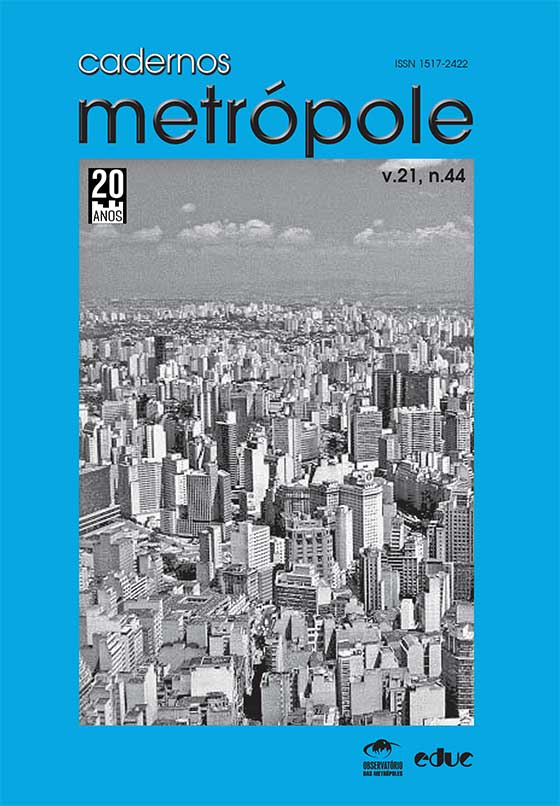Spatial attributes of inequality in large Brazilian cities: a relation between segregation and morphology
Keywords:
non-monetaryinequality, segregation, morphology, integration, spatial patternsAbstract
Through a comparative analysis of regions concentrating families with very high and very low per capita incomes in five large Brazilian cities (Goiânia, Fortaleza, Brasília, Belo Horizonte and Curitiba) and their respective morphologic features, this article aims to contribute to the understanding of a non-monetary factor connected with socioeconomic inequality in large Brazilian cities. The aim is to analyze the relation between morphology and opposed per capita income clustering formations. In methodological terms, both georeferenced and morphologic analyses are used. Besides indicating spatial patterns of specific regions, the more general conclusions that emerge are the relations of specific morphological regions and the capacity for integration and circulation of the groups that reside in them.Downloads
Published
2019-04-29
How to Cite
Zechin, P., & de Holanda, F. R. B. (2019). Spatial attributes of inequality in large Brazilian cities: a relation between segregation and morphology. Cadernos Metrópole, 21(44), 55–78. Retrieved from https://revistas.pucsp.br/index.php/metropole/article/view/2236-9996.2019-4403
Issue
Section
Artigos
License
A revista não tem condições de pagar direitos autorais nem de distribuir separatas.
O Instrumento Particular de Autorização e Cessão de Direitos Autorais, datado e assinado pelo(s) autor(es), deve ser transferido no passo 4 da submissão (Transferência de Documentos Suplementares). Em caso de dúvida consulte o Manual de Submissão pelo Autor.
O conteúdo do texto é de responsabilidade do(s) autor(es).


